Should Houston have been evacuated and what rebuilding should happen on the floodplains?
A good 200 miles away on the night Hurricane Harvey hit, Chris Walker had the best night’s sleep he’d had in a week. From the elevated area of The Heights in Houston, he was lucky enough to avoid the worst of the devastating flooding, but asks how the 100-year flood risks should now be assessed
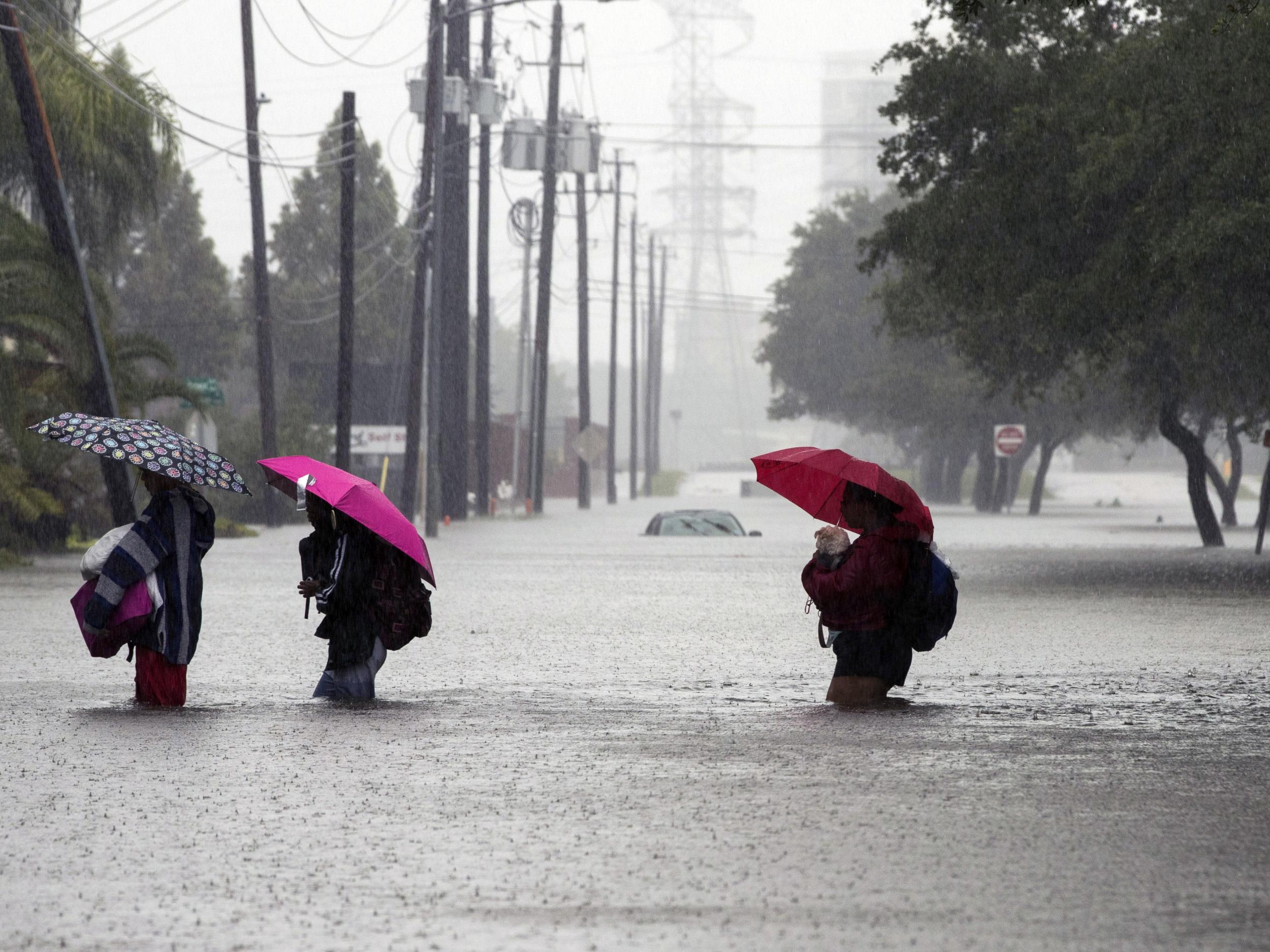
Hurricane Harvey made landfall around 10pm on the night of Friday 25 August. It was the best night’s sleep I’d had in a week. Our two-year-old daughter was fighting off a cold, so she had woken us up like clockwork at 2am every night till then, coughing herself awake, crying for a bit before finally coming upstairs and climbing into bed with mummy and daddy. She likes to sleep horizontally across the bed between us.
The hurricane came ashore near Corpus Christi, a small city of refineries and beach houses about 200 miles south-west of Houston. The distance is about the same between Manchester and London. So while Corpus was rocked by Category 4 winds, we barely got more than a stiff breeze with a few thunderstorms.
I slept soundly because I knew we had prepared well. The first inkling of trouble had come on Wednesday morning, when a friend stopped by my desk to ask if I’d seen the weather forecast. We had a trip out of town to visit a friend in Kentucky planned for months, a weekend break in the Appalachian Mountains to get away from the sweltering, 100F (37C) dog days of late summer in south-east Texas. Now it looked like the weather system that had drifted across the Gulf of Mexico all week was threatening to strengthen into a tropical storm and perhaps score a direct hit on Houston. Still, the forecast models remained uncertain.
By Wednesday night the forecasts had begun to solidify and the chances of escaping a tropical storm appeared to have gone. So too had my chances of getting away for the weekend. Now forecasters were predicting that the system would stall on top of us for about another five days, drenching us with heavy rains. We could therefore expect not only high winds knocking out the power lines, phone and internet, but also flooding of the roads into and out of our neighbourhood. That was when we realised this could be a major event, eight hours after we first heard about it, 48 hours before the predicted landfall.
I headed out to the supermarket to see about stocking up on hurricane supplies. Unfortunately it seemed that the rest of Houston had gotten the same idea. Cases of water were vanishing from the shelves as fast as workers could stock them. The canned goods aisle was picked clean. Only the organic, whole wheat bread was left. I took what I could get, loading up the trolley with granola bars and gummy bears, pasta and pizza, a few cases of water and juice boxes.
We have lived in Houston for 11 years. The worst weather event we had experienced to date was Hurricane Ike in September 2008. That hit Houston as a Category 2 hurricane, shattering windows downtown and flattening trees along its path. But it blew through quickly, and we passed the time comfortably in our apartment; hanging out for three days without electricity or water is a lot easier before you have children to care for.
We had even experienced major floods before: the Memorial Day flood in 2015, the Tax Day floods in 2016, and so we understood how floodwaters tend to impact our neighbourhood. Which spots fill with water, which roads to avoid, how long it takes for the bayou to go back within its banks. We had also experienced false alarms before, where forecasters had told us to prepare for a major rain event, we’d gone through the cycles of panic buying and hunkering down, only for the system to break up or change course at the last hour. Some other poor bastard gets soaked and we’re left eating leftover Pop Tarts for months on end.
By Thursday the hurricane hunters, with their satellites and aircraft, had begun to talk about “rapid intensification”, a Category 3 hurricane was by now pretty much guaranteed, with a possibility of reaching a Category 4. The main uncertainty resolved around where it would make landfall, and how long it would stick around for afterwards. The worst case scenario would see the system confined to the Texas coast, partly onshore, partly offshore, allowing the storm to pick up moisture over the gulf and then dump it on the coastal regions. This could create a conveyor belt of water parked over the Houston metropolitan region for days and days, bringing unfathomable amounts of rain.
This pretty much is what happened in June 2001, when Tropical Storm Allison dropped 39 inches of rain in six days, killing 12 people, flooding 73,000 homes and causing over $5bn (£3.8bn) of damage. I called my insurance company to ask about adding flood insurance, only to be told there was a 30-day waiting period. Offices closed early so that employees could make final preparations. Coastal areas announced evacuations. A dump truck driver forgot to lower his box bed and took out an overhead road sign on one of the main freeways through town at rush hour, creating gridlock across the entire region. It felt like the end of the world was rapidly approaching.
I didn’t sleep well on Thursday night, paranoid that we didn’t have enough supplies to feed a family of four for a week. I made it to the grocery store by 6.10am on Friday, 10 minutes after it opened, to find it as busy as I’d ever seen it, shelves picked over, long lines for the checkouts. I congratulated myself on picking up a few more gallons of distilled water that had been overlooked, some hand sanitiser, a value pack of chocolate chip cookies and a few new toys for my daughters. I figured I could ration them out as treats if we did have a long shut-in, or save them as Christmas presents if we didn’t.
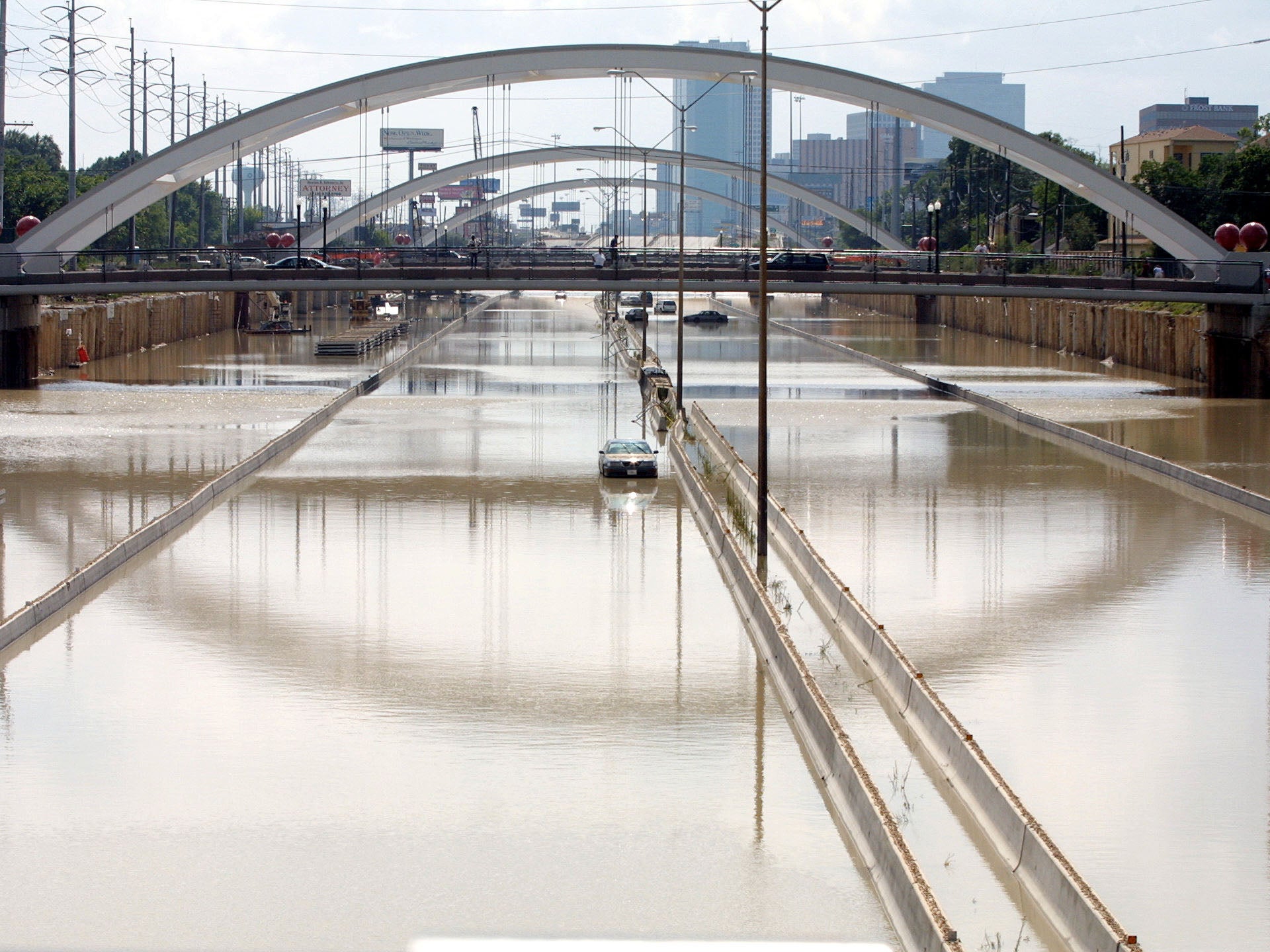
I put away our outdoor furniture, took down the hanging baskets (which had been dead for weeks anyway), checked to make sure the storm drains outside the house were free from obstructions and filled the bathtub full of water. That important advice came from my wife, who grew up in hurricane-prone Charleston, South Carolina. If the mains water goes out, you can at least flush the toilet by scooping water out of the bathtub and pouring it down the bowl.
Then, when gentle rain starting to fall as the outer arms of the system began to reach us, we settled in for the night – this time I slept.
Saturday was strange. We could see the images of devastation in Rockport and Corpus on our TV screens, but Houston was still relatively untouched. The rains were heavy at times, but in between the squalls we could get out and walk around the neighbourhood. We splashed in puddles, stopped by the local coffee shop for some cupcakes and generally enjoyed the literal calm before the storm. The last few joggers circled the block. We all knew what was coming next.
The heavy rains became continuous by around 7pm. By 10pm the local streets had begun to fill with water. By 10.30pm I saw the first car being pushed to higher ground by sodden ex-occupants.
By Sunday morning our streets were fast-flowing rivers, bypassing the storm drains and cascading directly to the bayous. Our house is in the north-westerly neighbourhood called “The Heights”, which as the name suggests, is slightly higher than the surrounding areas – thank goodness. We are around half a mile from the nearest bayou and about 20 feet above it. Of equal importance, our house sits around 3 feet above street level. So while the waters rushed down the streets and spilled up onto the pavement, they never encroached upon our property.
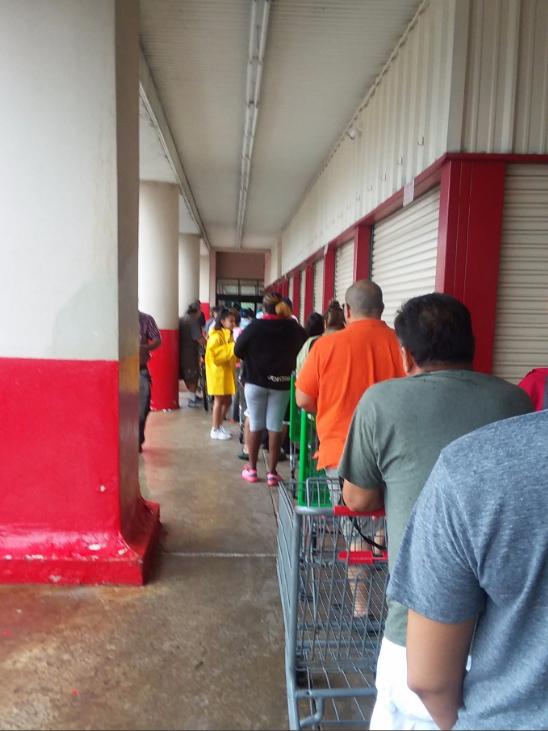
Many others were not so fortunate. We checked in with friends by phone and social media. We felt their anxiety as the water crept higher and higher. We offered words of encouragement, because that was all we had. Our phones constantly sounded with emergency alerts.
We watched on TV as people waded from their homes through chest-deep water, with only the clothes on their backs, or waited on rooftops for rescue by boat or helicopter.
We learned helpful advice from the city: don’t take shelter in your attic unless you have an axe to cut a hole in the roof and escape; bring a white towel to wave so that would-be rescuers can see you.
We saw the flotilla of neighbours helping neighbours, boats normally used for fishing on lakes instead plucking people and pets from sodden suburbs and taking them... where exactly? Away from the only homes many people had ever known.
Amazingly our power never even flickered. We watched Liverpool destroy Arsenal in glorious sunshine on Merseyside half a world away, all while tornado warnings lit up our home screens. We used our pent-up energy to create a safe room, which should be on the ground floor, with no windows and no exterior walls. In our wooden bungalow, built in 1920, that meant the 10 foot by 2 foot hallway between the bedrooms and the bathroom. We pulled the covers off the guest bed, threw in a beanbag chair and some pillows, a few bottles of water, part of our snack stash and called it good. They say an approaching tornado is heralded by a howling noise that sounds like a freight train. I turned down the TV a bit to ensure we’d hear one coming. Thankfully it never did.
The rain came in bands, the remnants of the hurricane spiralled out like the Milky Way, with the arms of strong rain separated by periods of nothing at all. When the rain eased off for long enough the streets amazingly drained – turning from raging torrents to light trickles. While that was good news for us, however, we knew the water was going somewhere, and that somewhere was downstream where the bayous were rising, spilling over their banks and inundating the surrounding floodplain.
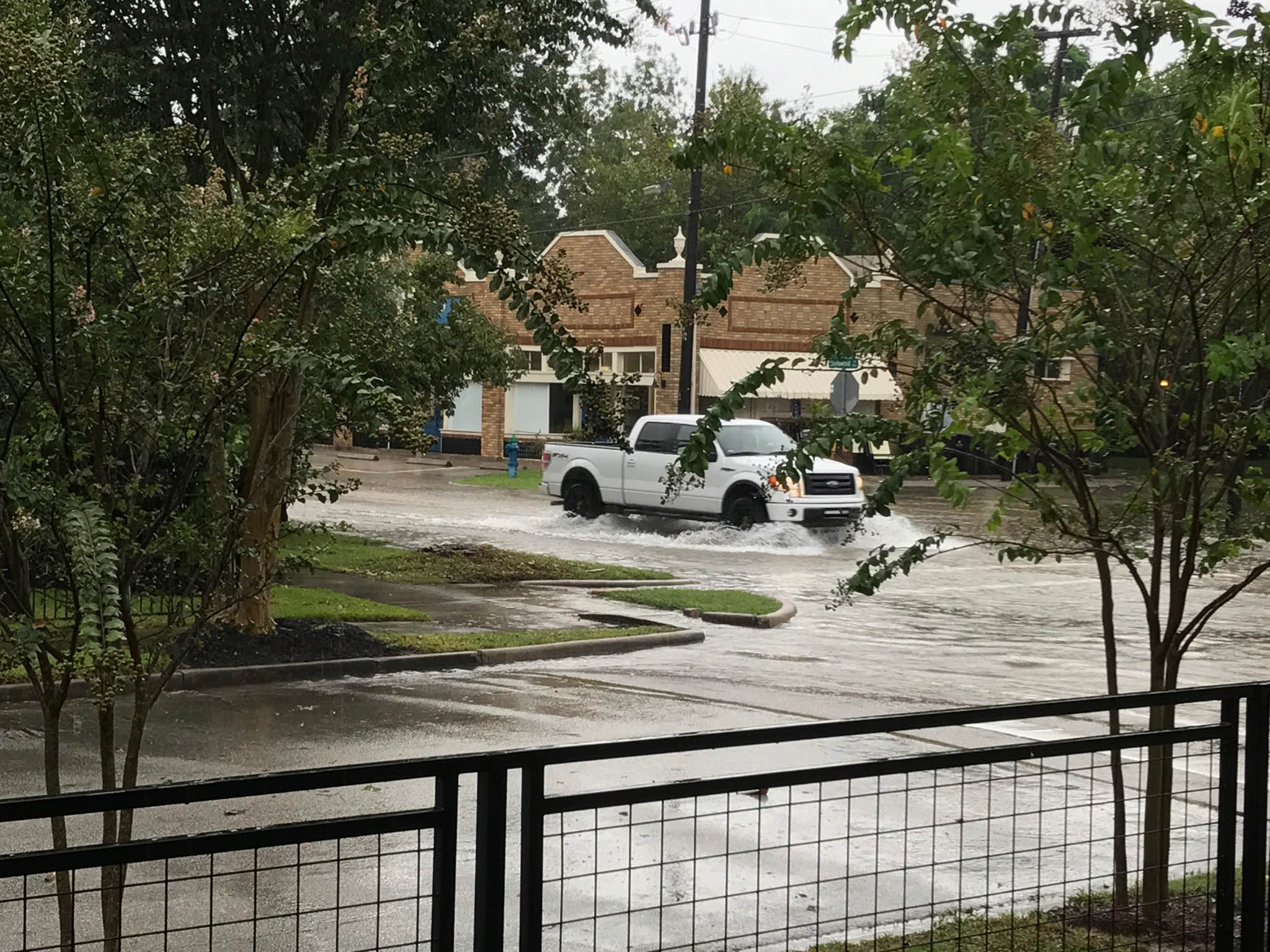
We checked in with our neighbours, made sure everyone was safe and dry. The rain picked up again and we hurried home to shelter. The rain remained heavy throughout Sunday night, with loud thunder and spectacular lightning. Some mosquitos snuck into the house and started to breed in the bathtub full of water. I got eaten alive. The power stayed on throughout the Game Of Thrones season finale. Our two-year-old snuck into our bed around 2am. I got kicked in the face.
Monday brought more steady rain. Growing up in Belfast, I thought I’d be prepared for such days. But it turns out the continuous drizzle of the UK is quite different from the insistent pounding of a tropical storm, particularly when you know that each hour of rainfall is inflicting increasing misfortune on those around you.
By now the city had begun to set up shelters for those displaced by the storms and rescued from their homes. The main convention centre downtown where I have attended conferences, given talks and cadged free beer from vendors was now hosting 8,000 people on temporary camp beds. Our local neighbourhood social media site, Nextdoor, began to pulse with ideas and opportunities for volunteering and donations.
My wife quickly scoured the house for items that matched the wish list circulated by the nearest shelter, invigorated by the chance to contribute. Towels, clothes, feminine hygiene products, shampoo. We packaged it all in bags, sorted by type. I choked back the tears as my daughters went through the bookshelf and toy box to pick out items to donate. “We are giving these to kids just like you who lost their toys in the flood” we explained. Each toy they selected brought back so many memories. A sabre-toothed cat from a trip to California. A book we read at bedtime every night for a month before being discarded, never to be touched again. I realised I couldn’t even imagine what it would feel like to lose all my possessions, with all the memories attached to them.
We loaded up the car, plotted the best way to get the drop-off location, made sure the mechanical driveway gate was still functional. Then the rain picked up and our phones buzzed with yet another flash flood warning. Another strong band of storms was moving into the area. We decided we couldn’t risk our safety and we would wait until the rain eased off later that day. The rain never eased. The car remained packed.
A million articles were published online about the storm, the rescues, the overdevelopment of Houston, the repeated history of flooding. I think I read them all. There was a common line of thinking from observers that we should have evacuated the city, but few if any noted that such an approach had been tried before.
In September 2005, three weeks after Hurricane Katrina devastated New Orleans – killing over 1,800 people – Hurricane Rita formed. It rapidly intensified to a Category 5 and became the strongest tropical cyclone recorded in the Gulf of Mexico. It was predicted to score a direct hit on Houston. Local officials feared the worst and ordered the evacuation of the city. It did not go well. Up to four million people took to the roads, creating a gridlock that lasted for two days in the middle of a heat wave. A total of 107 people died in their cars of hyperthermia, dehydration and evacuation-related accidents. The hurricane itself took a late turn to the east and spared the city.
In any case, the roads and freeway systems in Houston are built to retain water in major rain events in order to prevent houses from flooding. If a hurricane strikes the Houston region, the last place you want to be is in your car.
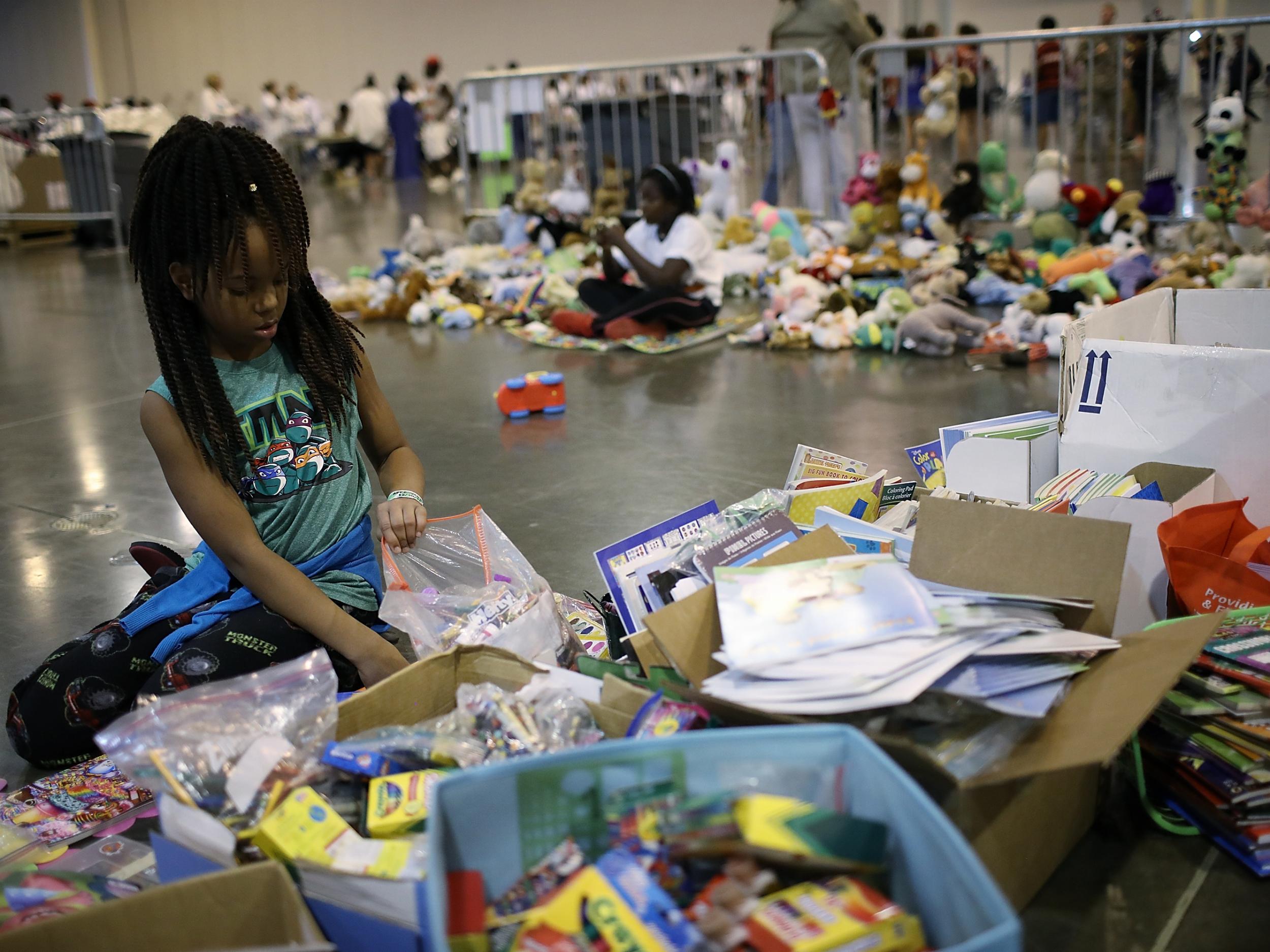
By Tuesday the rains had become more intermittent. We made it out to the drop-off location and found that the shelters were already overwhelmed with donations. Volunteers were being turned away from the shelters because there were too many. The “Cajun Navy”, boat owners from Louisiana, had driven to Houston to help with the rescue efforts. Coast Guard helicopters shuttled overhead. The human spirit of community and togetherness had shone through and conquered adversity, as it always seems to in these situations.
Set against that good news, there were reports of looters and the mayor imposed a curfew. What’s more, the waters continued to rise, but in different areas now. West Houston became the primary focus of concern as two water retention dams became “critically stressed”. The Addicks and Barker reservoirs are not like reservoirs you might picture, permanently holding drinking water for the city. Most of the time they are open scrubland, forests and playing fields, however in periods of heavy rainfall they operate as water retention ponds, trapping water behind massive earthen dams.
With these dams now approaching capacity the Army Corps of Engineers who manage them must release water downstream to relieve the pressure. This means releasing water into already flooded neighbourhoods. This led to a second wave of evacuees days after the heaviest rain had finished, as this slow-motion disaster continues to unfold. On Tuesday evening the rain stopped for a while and the sun came out. Everyone took a picture and uploaded it to Facebook at the same time.
As I write it’s a week since we first began to anticipate the hurricane. In that time we’ve learned a lot about ourselves, each other, atmospheric physics, local development restrictions and the lack thereof. Most restaurants are open again in my neighbourhood, which has helped the world feel more normal, and also helps the hourly workers who, of course, don’t get paid unless they work. The supermarkets are open again too, although restocking is spotty and there are long lines to get in. Our family’s food supplies have held out well. Although we are a bit sick of pasta and I’m looking forward to getting fresh bread, such concerns seem incredibly trivial compared to the challenges so many in the city are facing.
There is much rebuilding to be done in the years to come. Thousands will soon be ripping out untold acres of plasterboard, taking miles of ruined carpet to landfills. On a city-wide level we need to think seriously about what sort of rebuilding we should allow in the floodplain and how we assess a 100-year flood risk, given that we appear to have had three of them in the last three years. Perhaps the city will only get serious about mitigating the runoff impact of new development when business leaders refuse to look at these sorts of losses as part of the cost of doing business in an unzoned city.
On the state and federal level we need to ensure our first responders are adequately funded, our flood insurance isn’t subsidising or incentivising inappropriate development in floodplains, and that our planning for future development and disasters takes into account the impacts of anthropogenic climate changes described and documented by the scientific community.
So here we are, Houston under curfew. Bearing witness to so much tragedy and destruction has been overwhelming and heartbreaking for our city. And yet, I think we are also taking a large amount of pride that the city has responded to the challenge so well. Residents have shown overwhelming generosity to impacted neighbours. We have received incredible help from our surrounding states and nations. So, against the background of all that has happened in the past few years, in a nation that some have started to see as irrevocably divided, perhaps we can create some optimism for the American experiment and demonstrate that the forces that would rip us apart are not as strong as the ties that bind us together. Houston Strong.
Join our commenting forum
Join thought-provoking conversations, follow other Independent readers and see their replies
Comments